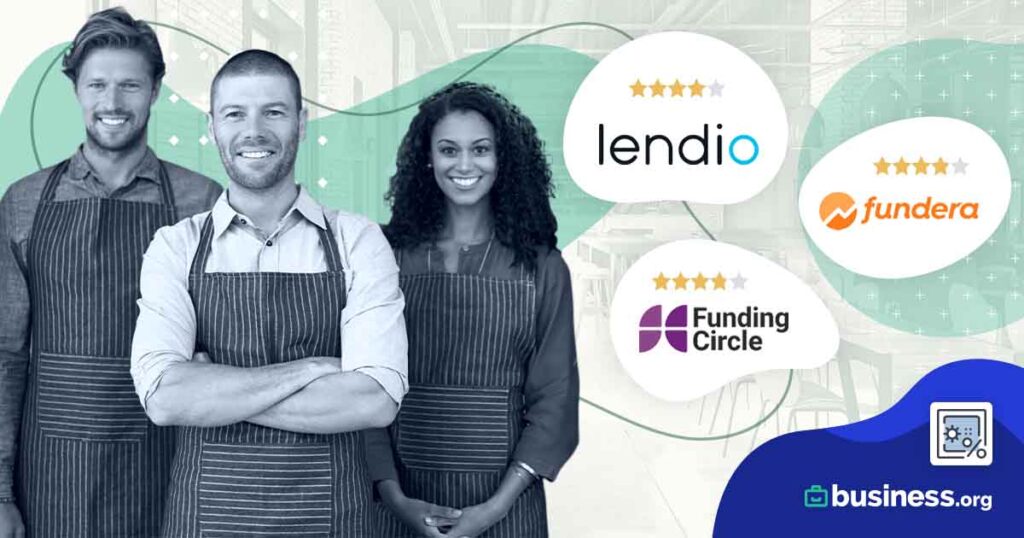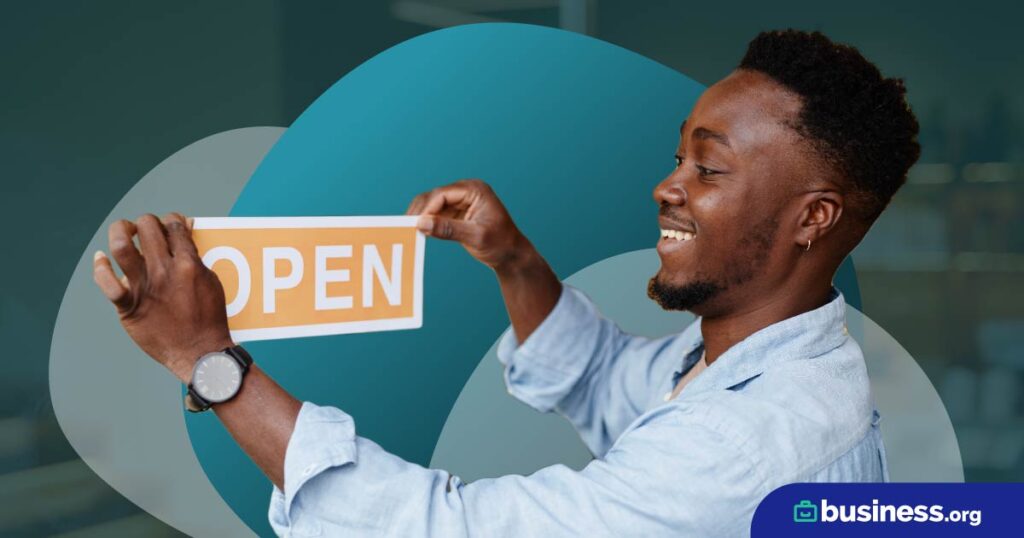We are committed to sharing unbiased reviews. Some of the links on our site are from our partners who compensate us. Read our editorial guidelines and advertising disclosure.
EIDL vs. PPP Loans: Comparing SBA COVID-19 Relief Options
If you’re a small-business owner whose business has been hurt by the COVID-19 pandemic, you’ve probably heard about COVID-19 relief financing. In fact, the US Small Business Administration has two such relief loan programs: the Economic Injury Disaster Loan program (aka EIDL loans) or the Paycheck Protection Program (aka PPP loans).
But which loan program should your business go with?
We’ll help you figure it out. In this article, we’ll break down the similarities and differences between EIDL and PPP loans. By the end, you should know whether you want to apply for an EIDL loan or a PPP loan―or both.
While the current application deadline for Paycheck Protection Program loans is May 31, 2021, that could change. Many lenders are asking congress to extend the deadline.
How SBA EIDL loans and PPP loans compare
To get started, let’s make sure we’re on the same page about what EIDL loans and PPP loans are.
Because while they’re both types of SBA business loans (loans backed by the US Small Business Administration, or SBA), all these acronyms and definitions can get confusing.
Economic Injury Disaster loans vs. Paycheck Protection Program loans
Data effective 3/11/21. At publishing time, amounts, rates, and requirements are current but are subject to change. Offers may not be available in all areas.
EIDL loans, or Economic Injury Disaster Loan program loans, are a type of SBA disaster loan. SBA disaster loans are nothing new. For quite a few years now, business owners have been able to get disaster loans in response to things like hurricanes, droughts, and now pandemics.
Note that SBA EIDL loans as a whole aren’t actually coronavirus-specific. But given current events, when most people talk about EIDL loans, they mean the version rolled out in response to the pandemic, with its own set of rules and terms. (And that’s how we’ll use the term for the rest of this article.)
PPP loans, or Paycheck Protection Program loans, are from a much newer loan program. The Paycheck Protection Program was created in 2020, as part of the CARES Act (Coronavirus Aid, Relief, and Economic Security Act). That means that PPP loans are all pandemic-specific.
At this point, you can get two types of PPP loans: First Draw PPP loans and Second Draw PPP loans. First Draw loans go to business owners applying for their first PPP loan, while Second Draw loans go to (you guessed it) business owners applying for their second PPP loan. They work pretty much the same way.
So now that we’ve gotten their basic definitions down, we can talk about how EIDL loans and PPP loans actually compare.
Loan uses
Both EIDL and PPP loans can be used to cover many of your business’s usual expenses. But there are some details you should know.
According to the SBA, EIDL proceeds are meant to cover costs (like debts and everyday operating expenses) “that could have been met had the disaster not occurred.” It offers a few examples of acceptable uses:
- Employee benefits coverage
- Rent and utilities
- Debt payments (like loan payments)
Again, those are examples rather than a comprehensive list. Point being, your EIDL loan should go to typical business expenses rather than new projects (like building a new location).
PPP loans, on the other hand, were designed mostly to help cover employee payroll costs (hence the “paycheck protection” in the name). But you can also use PPP loan proceeds for a few other things:
- Mortgage interest or rent
- Utilities
- Coronavirus-related worker protection
- Uninsured property damage costs (from looting or vandalism)
- Operating expenses
Just remember that you need to spend most of your PPP loan on payroll expenses if you want loan forgiveness.
By signing up I agree to the Terms of Use.
Loan forgiveness
If you haven’t already heard, PPP loans can be forgiven―meaning you don’t have to repay them. EIDL loans, however, require you to repay them.
So what does PPP loan forgiveness look like? Well, you’ll want to talk with your lender to make sure you understand all the PPP loan forgiveness rules, but it basically boils down to using your PPP loan in the right way. That means doing the following:
- Keeping your staff levels (and their paychecks) at the same level
- Using your PPP loan proceeds only on applicable costs
- Spending most (60%) of the loan proceeds on payroll expenses
If you do all that, you can apply for loan forgiveness once you’ve used your entire loan amount. (And by the way, PPP loans have deferred payments for 10 months after your loan use period, so you may not have to make any payments ever.)
But keep in mind that you have to apply for PPP loan forgiveness―it doesn’t get automatically granted. You’ll have to give your lender supporting documentation and loan forgiveness paperwork. So keep those receipts.
Loan details
While loan forgiveness eligibility is probably the biggest difference between PPP loans and EIDL loans, it’s not the only one. Their rates and repayment terms look pretty different too.
Rates
PPP loans have the lower interest rate (a stunning 1%). And of course, that’s assuming you end up repaying your PPP loan rather than getting it forgiven. EIDL rates are a bit higher. Nonprofits pay 2.75% APR (annual percentage rate), while for-profit businesses pay 3.75% APR.
To be clear, though, while an EIDL loan costs more than a PPP loan does, it is still very, very affordable compared to most business loans out there.
Repayment terms
SBA EIDL loans come with longer repayment terms than PPP loans do. You get up to 5 years to pay back your PPP funds (if you don’t get loan forgiveness), while you get up to 30 years to repay your disaster loan.
That long repayment term means that EIDL loans give your business plenty of time to recover, and you shouldn't get trapped with too-high monthly payments.
Borrower requirements
Aside from the loans themselves, the EIDL and PPP loan programs also handle borrowers differently. Economic injury loans come with more borrower requirements and restrictions than do Paycheck Protection loans do.
In fact, the SBA offers several reasons why your EIDL application could get turned down:
- You have bad credit
- Your industry isn’t eligible (agricultural businesses, for example)
- You’re delinquent on child support payments
- You can’t show your business suffered economic injury
And while it’s not a requirement for all EIDL borrowers, you will need to have collateral to get a loan over $25,000. (And you’ll have to offer a personal guarantee for a loan of $200,000 or more.)
But a hopeful PPP borrower can get turned down for just two reasons:
- You’ve defaulted on a previous SBA loan
- The SBA didn’t get your application in time
Much like we said about loan rates, though, EIDL loan borrower requirements are still very impressive. If you applied for a typical business loan, you’d have to meet all sorts of revenue and time in business requirements. So while EIDL loans are harder to qualify for than PPP loans, they’re easier to get than the vast majority of loans from traditional lenders.
And speaking of lenders, let’s talk about how you actually apply for these loans.
Application process
If you want to get an SBA disaster loan, you submit an EIDL application directly to the SBA itself. You can fill out your application online, which takes two or so hours.
For a PPP loan, on the other hand, you apply with an approved lender of your choice. Many traditional lenders (banks and credit unions) accept PPP loan applications, as do quite a few online lenders.
If you already have a trusted lender, you can apply with them. But if you’re not sure who to start your PPP application with, we suggest going with an online lender like Fundera. (Quite a few banks have been criticized for prioritizing applications for their existing customers over other applicants.)
After your application gets turned in, you can check the status with whoever you submitted it with―so the SBA for an EIDL loan and your lender of choice for a PPP loan.
Once your application gets approved, you just have to wait for your loan funds to come through. For an EIDL loan, expect the funding process to take 21 days at minimum. PPP loans should come through faster, within 10 days.
And with that, you know the differences between EIDL and PPP loans.
So which loan program should your business turn to?
EIDL loan: Best for long-term relief
If you’re looking for relief beyond the next few months, then an EIDL loan is the way to go.
Part of the reason for that comes down to deadlines―you can apply for EIDL loans through the end of 2021, while PPP loan applications close at the end of March 2021. So if your business continues to need COVID-19 relief later in the year, an EIDL loan will be your only SBA loan option.
But the loan design also matters. PPP loans were designed to be used and repaid quickly (in fact, loan forgiveness gets based on a maximum period of 24 weeks). EIDL loans, however, have what it takes to go the long haul. With loan terms of up to 30 years, you can take your time using and then repaying your loan. And thanks to the affordable APR on EIDL loans, you won’t have to overpay to do so.
Of course, EIDL loans won’t work for all business owners. Since these loans come with slightly stricter requirements than PPP loans (including potential collateral and personal guarantee requirements), EIDL loans won’t appeal to everyone. And yes, EIDL loans will cost your more than PPP loans.
Even so, an SBA economic injury loan offers a good solution for longer-term pandemic relief.
PPP loan: Best for loan forgiveness
Want the cheapest COVID-19 relief possible? Then apply for a PPP loan ASAP.
Thanks to the loan forgiveness baked into the PPP loan program, you likely won’t have to repay your PPP funds at all. That alone makes PPP loans just about the cheapest business loan you can get. Since EIDL loans can’t be forgiven, PPP loans are a no-brainer for people who want to avoid the costs of loan repayment.
And even if you do end up repaying your PPP loan, PPP loans have lower interest than EIDL loans. That makes them an affordable option even when loan forgiveness isn’t an option. Yes, EIDL loans have competitive rates too―but they can’t beat the 1% fixed interest on a PPP loan.
Of course, PPP loans won’t be available much longer. Depending on your timing, a PPP loan may not be an option at all. And we also need to remind you that PPP loans must be used in a specific way―and mostly for payroll (especially if you want that sweet loan forgiveness). So if you don’t plan to spend your loan mostly on payroll costs, a PPP loan isn’t your best option.
But if you’ve got payroll needs and you can get your application in soon, then a PPP loan offers a cheap―even free―way to get COVID relief.

Browse hundreds of loan options, custom-tailored to your business and budget needs, from a single, simple platform.
EIDL vs. PPP loan FAQ
No, EIDL (Economic Injury Disaster Loan) loans and PPP (Paycheck Protection Program) loans are two different things, though they’re both loan programs run by the US Small Business Administration.
Yes, you can apply for and get a business loan through both the EIDL and PPP loan programs―but you can’t use the loan proceeds for the same purpose.
So if you’re using the PPP loan proceeds for payroll, for example, you’ll need to use your EIDL proceeds on something else (like operating expenses).
No, getting an EIDL loan won’t reduce the forgiveness amount you qualify for with your PPP loan.
That wasn’t always the case though. There was a time when if you got an EIDL loan advance (also called an EIDL grant) that your PPP loan forgiveness would be reduced by that EIDL advance amount. But the rules have changed, so that no longer happens. (Plus, if it did happen to you, you should have received a refund from the SBA.)
The takeaway
So now that we’ve uncovered all the differences between Paycheck Protection Program loans and Economic Injury Disaster loans, which should you apply for?
If you want a loan with a longer application period and repayment term, the EIDL program is the way to go. It offers very low rates and a super generous repayment term of up to 30 years, making it a pretty affordable loan for most businesses.
But if you care more about loan costs―so you’d love a totally forgivable loan―then you’re better off with a PPP loan (as long as you plan to use it mostly for payroll costs). Just get your application in quickly, as the program ends soon.
And remember, you don’t have to choose between the two programs―you can always apply for both PPP and EIDL funds.
Whatever you choose, we hope your business gets the financial help it needs.
Want a business loan with less restrictive uses? Check out our rankings of the best small-business loans to find loan options for all kinds of business needs.
Disclaimer
At Business.org, our research is meant to offer general product and service recommendations. We don't guarantee that our suggestions will work best for each individual or business, so consider your unique needs when choosing products and services.



